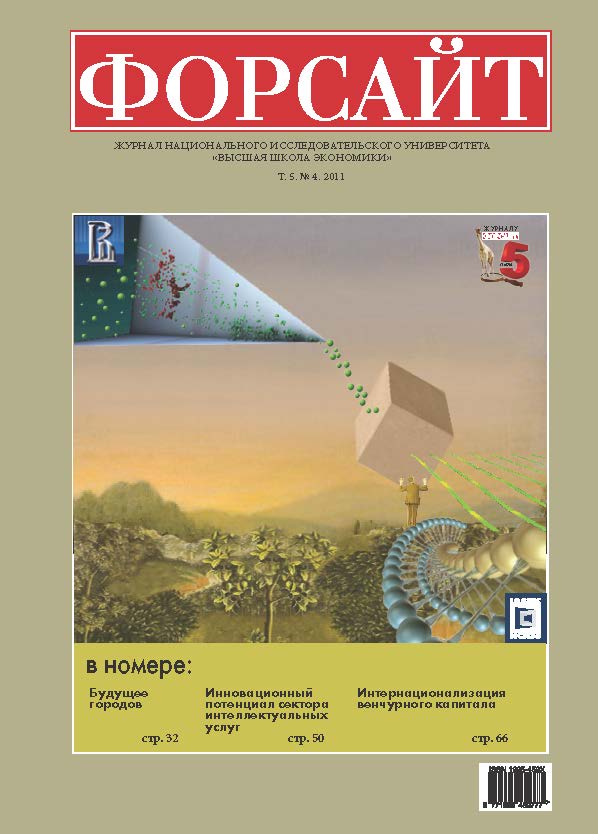Abstract
The increasing complexity of globalization is reflected in the rapid growth of urban areas and expanding mega cities, where the majority of the world’ population is concentrated and where new trends in society and economy develop. This paper addresses the need for a new paradigm for urban development studies. Experts tend to share the view that the radically changing global of urban growth requires rethinking.
The urgent task is to move from the concept of “growth at any price” to a philosophy based on the healthy and creative city.
The paper explores new approaches, concepts and policy instruments that are essential for the moving toward a focus on the urban environment quality. The kind of lateral thinking that presumed an explicit division of urban territory into functional areas is no longer up to date. It is necessary to take a more creative, synthetic and multidisciplinary approaches. One can envision a city from a holistic perspective and see challenges as opportunities. A city should function as a single system, in other words, serving as one large project in which creativity and innovation are core elements. There is no template for such a city: each city will have its particular features.
The authors review some successfully implemented urban strategies to help build a model of planning for cities embarking on innovative development.
To realize such strategies, a critical mass of innovators to lead the process of urban transformation is necessary. Emphasis in planning therefore falls on human capital and on new flexible interdisciplinary strategies to identify sources of potential growth to develop and use advanced policy instruments to promote and establish new approaches. Some restructuring of the governance system should accompany new training for earmarked programmes, partnering with research universities, creating R&D departments within municipal governing bodies, and involving citizens in decision-making process regarding city development. Building up such human factors will determine whether the city will suffer gradual decline or become a “vibrant” environment with a higher quality of life.
References
Anderson A.E. (1987) Culture, Creativity and Economic Development in a Regional Context. Project № 10, Seminar № 5. Strasbourg: Council for Cultural Co-operation.
Bianchini F., Ghilardi S. (1997) Culture and Neighborhoods: A Comparative Report. Strasbourg: Council of Europe.
Cisco (2007) Строительная отрасль на пороге революции. http://www.cisco.com/web/RU/news/releases/txt/1384.html.
Climate Group (2008) SMART 2020: Enabling the Low Carbon Economy in the Information Age. A report by The Climate Group on behalf of the Global eSustainability Initiative (GeSI). Creative Commons. http://www.smart2020.org/_assets/files/02_Smart2020Report.pdf.
Douglass M. (2002) From global intercity competition to cooperation for livable cities and economic resilience in Pacific Asia//Environment&Urbanization. Vol. 14. № 1 (April). P. 53-68.
Hall P. (1995) The roots of urban innovation: culture, technology and the urban order//Urban Futures. № 19. P. 41-52.
Hall P. (1998) Cities in Civilisation. London: Weidenfeld.
IBM (2009a) A vision of smarter cities: How cities can lead the way into a prosperous and sustainable future. IBM Institute for Business Value.
IBM (2009b) IBM и город Чесапик строят разумный город. http://www.ibm.com/news/ru/ru/2009/12/07/q868442i18826a10.html.
Jacobs J. (1993) The Death and Life of Great American Cities. New York: Random House.
Jacobs J. (1998) Staging difference: aestheticization and the politics of difference in contemporary cities//Fincher R., Jacobs J.M. (eds.) Cities of Difference. New York: Guilford. P. 252-278.
Landry C. (2008) The Creative City: A Toolkit for Urban Innovators (2nd ed.). London: Earthscan.
Parnreiter C. (2009) Megacities in the Geography of Global Economic Governance//Die Erde. Vol. 140. № 4. P. 371-390.
Porter M.E. (1980) Competitive Strategy: Techniques for Analyzing Industries and Competitors. New York. Free Press.
Sassen S. (1994) Cities in a world economy. Thousand Oaks: Pine Forge Press.
Scott A.J. (2006) Creative cities: Conceptual issues and policy questions//Journal of Urban Affairs. Vol 28. № 1. Р. 1-17.
Siemens (2006) Перспективы мегаполисов. https://www.cee.siemens.com/web/ua/ru/Documents/megapolis.pdf.
Simmie J., Strambach S. (2006) The Сontribution of KIBS to Innovation in Cities: An Evolutionary and Institutional Perspective//Journal of Knowledge Management. Vol. 10. № 5. Р. 26-40.
Steinert K., Marom R., Richard P., Weiga G., Witters L. (2011) Making Cities Smart and Sustainable//Dutta S (ed.) The Global Innovation Index 2011. Fontainbleau: INSEAD. P. 87-95.
The Economist (2011) World in Figures 2011. http://www.economist.com/theworldin/2011.
UN (2009) World Urbanization Prospects: The 2009 Revision. New York.
Urban Indicators Guidelines (2004) Monitoring Нabitat Agenda and Millennium Development Goals. United Nations Human Settlements Programme.
Vancouver City Council (2009) Vancouver 2020: A Bright Green Future. An Action Plan for Becoming the World's Greenest City by 2020. Vancouver.
Берч Д., Бин Д., Блайденберг Э., Боргсдорф Д., Марсталл Д., Савельев О. (2010) Опыт города Шарлотт. «Дорожная карта» преобразования и повышения эффективности системы городского управления. М.: Олимп-Бизнес.
Бокарева Н. (2009) «Зеленая революция» в Британии стартовала экогородами. http://www.bfm.ru/articles/2009/07/22/v-velikobritanii-odobreny-chetyre-plana-sozdanija-ekogorodov.html.
Бэйли Р. (2011) Принципы развития устойчивого городского сообщества. Опыт Ванкувера. Публичная лекция на ПОЛИТ.ру. http://polit.ru/article/2011/10/25/bayley_anons/.
Вендина О. (2010) Невидимые сдвиги в развитии городов//Демоскоп Weekly. № 407-408 (25 января -7 февраля). http://demoscope.ru/weekly/2010/0407/analit01.php.
Дорошенко M.E. (2011) Инновационный потенциал сектора интеллектуальных услуг в России//Форсайт. Т. 5. № 4. С. 50-65.
Лэндри Ч. (2011) Публичная лекция 22 марта 2011 года. http://www.creativeindustries.ru/rus/241.
Слука Н. (2008) Глобальные города//Эксперт. № 15. C. 23-26.
Флорида Р. (2002) Креативный класс: люди, которые определяют будущее. М.: Классика-XXI.
Харви Д. (2009) Утопии и проблема их воплощения//Проект International. № 2. С. 158-165.
Щукин А. (2011) Время заняться городами//Эксперт. № 40 (773), 10 октября. C. 24-26.

This work is licensed under a Creative Commons Attribution 4.0 International License.

